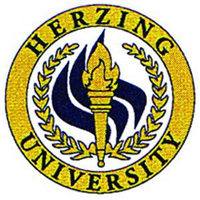What do they do?
Assist physical therapists in providing physical therapy treatments and procedures. May, in accordance with state laws, assist in the development of treatment plans, carry out routine functions, document the progress of treatment, and modify specific treatments in accordance with patient status and within the scope of treatment plans established by a physical therapist. Generally requires formal training.
Also known as:
Certified Physical Therapist Assistant (CPTA), Home Care Physical Therapy Assistant, Home Health Physical Therapist Assistant, Licensed Physical Therapist Assistant (LPTA), Licensed Physical Therapy Assistant, Outpatient Physical Therapist Assistant, Per Diem Physical Therapist Assistant (Per Diem PTA), Physical Therapist Assistant (PTA), Physical Therapy Assistant (PTA)
-
3.7%
Change
Ranks #58 in job growth rate970Job Openings
Ranks #4 in net job growth
Looking for colleges that offer a specific major? Use the College Match Tool to find your best-matched schools and discover your estimated Net Price!
- Associate's degree (50%)
- Bachelor's degree (30%)
- Some college, no degree (9%)
- High school diploma equivalent (5%)
- Master's degree (3%)
- Doctorate or Professional Degree (2%)
- Less than high school diploma (1%)
People in this career often have these skills:
- Active Listening - Giving full attention to what other people are saying, taking time to understand the points being made, asking questions as appropriate, and not interrupting at inappropriate times.
- Speaking - Talking to others to convey information effectively.
- Monitoring - Monitoring/Assessing performance of yourself, other individuals, or organizations to make improvements or take corrective action.
- Social Perceptiveness - Being aware of others' reactions and understanding why they react as they do.
People in this career often know a lot about:
- Customer and Personal Service - Knowledge of principles and processes for providing customer and personal services. This includes customer needs assessment, meeting quality standards for services, and evaluation of customer satisfaction.
- Therapy and Counseling - Knowledge of principles, methods, and procedures for diagnosis, treatment, and rehabilitation of physical and mental dysfunctions, and for career counseling and guidance.
- English Language - Knowledge of the structure and content of the English language including the meaning and spelling of words, rules of composition, and grammar.
- Education and Training - Knowledge of principles and methods for curriculum and training design, teaching and instruction for individuals and groups, and the measurement of training effects.
- Psychology - Knowledge of human behavior and performance; individual differences in ability, personality, and interests; learning and motivation; psychological research methods; and the assessment and treatment of behavioral and affective disorders.
- Medicine and Dentistry - Knowledge of the information and techniques needed to diagnose and treat human injuries, diseases, and deformities. This includes symptoms, treatment alternatives, drug properties and interactions, and preventive health-care measures.
- Computers and Electronics - Knowledge of circuit boards, processors, chips, electronic equipment, and computer hardware and software, including applications and programming.
- Biology - Knowledge of plant and animal organisms, their tissues, cells, functions, interdependencies, and interactions with each other and the environment.
People in this career often have talent in:
- Oral Expression - The ability to communicate information and ideas in speaking so others will understand.
- Oral Comprehension - The ability to listen to and understand information and ideas presented through spoken words and sentences.
- Speech Recognition - The ability to identify and understand the speech of another person.
- Speech Clarity - The ability to speak clearly so others can understand you.
- Written Comprehension - The ability to read and understand information and ideas presented in writing.
- Problem Sensitivity - The ability to tell when something is wrong or is likely to go wrong. It does not involve solving the problem, only recognizing that there is a problem.
- Near Vision - The ability to see details at close range (within a few feet of the observer).
People in this career often do these activities:
- Engage patients in exercises or activities.
- Encourage patients during therapeutic activities.
- Document client health or progress.
- Record patient medical histories.
- Monitor patient progress or responses to treatments.
- Prepare medical reports or documents.
- Communicate patient status to other health practitioners.
- Train patients, family members, or caregivers in techniques for managing disabilities or illnesses.
- Hold patients to ensure proper positioning or safety.
- Confer with other professionals to plan patient care.
- Administer therapy treatments to patients using hands or physical treatment aids.
- Move patients to or from treatment areas.
- Adjust positions of patients on beds or tables.
- Clean patient rooms or patient treatment rooms.
- Teach medical procedures or medical equipment use to patients.
- Assess physical conditions of patients to aid in diagnosis or treatment.
- Monitor medical equipment to ensure proper functioning.
- Prepare medical instruments or equipment for use.
- Prepare patient treatment areas for use.
- Administer basic health care or medical treatments.
- Assist patients with daily activities.
- Attend educational events to update medical knowledge.
- Teach medical procedures to healthcare personnel.
- Fit patients for assistive devices.
- Perform clerical work in medical settings.
- Inventory medical supplies or equipment.
This page includes data from:

 Occupation statistics: USDOL U.S. Bureau of Labor Statistics Occupational Employment Statistics
Occupation statistics: USDOL U.S. Bureau of Labor Statistics Occupational Employment Statistics
 Videos: CareerOneStop, USDOL/ETA and the Minnesota Department of Employment & Economic Development
Videos: CareerOneStop, USDOL/ETA and the Minnesota Department of Employment & Economic Development








